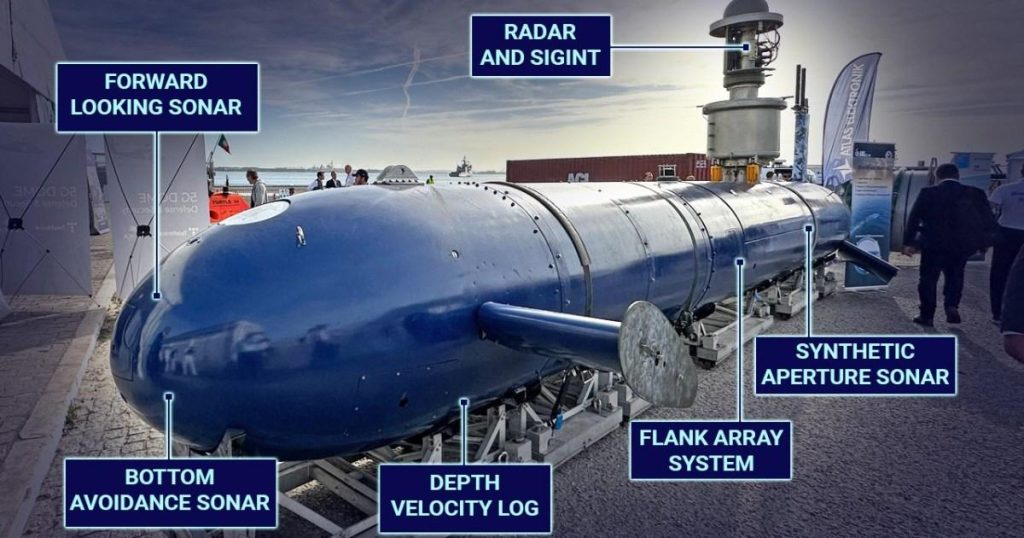Paragraph 1: Unveiling the "Blue Whale" and its Mission
The Baltic Sea, a focal point of mounting geopolitical tensions, has become the testing ground for a new era of underwater surveillance. At the heart of this development is the "Blue Whale," a 5.5-ton unmanned underwater vehicle (UUV) developed by Israel and deployed by the German Navy. This massive drone, nearly 11 meters long and over a meter in diameter, represents a significant leap forward in maritime intelligence gathering. Its mission: to monitor and potentially deter suspected sabotage activities by Russian and Chinese vessels in the strategically vital Baltic Sea. The drone’s deployment comes amid growing concerns over the vulnerability of undersea infrastructure, particularly power lines and telecom cables, which have become targets of increasing interest in recent times.
Paragraph 2: A Technological Marvel for Covert Operations
The "Blue Whale" is no ordinary submarine drone. It is designed for covert operations, operating silently beneath the surface to avoid detection by potential adversaries. Its advanced capabilities enable it to gather a wide range of intelligence, including detecting submarines, mapping the seabed for naval mines, and collecting acoustic data. Crucially, the drone achieves these objectives without emitting detectable signals that would alert targets to its presence. This stealth feature, typically associated with manned submarines, makes the "Blue Whale" a game-changer in maritime surveillance, providing a level of discreet observation previously unattainable through unmanned systems.
Paragraph 3: NATO’s Response to Emerging Threats
The deployment of the "Blue Whale" is part of a broader NATO initiative to bolster the security of critical infrastructure in the Baltic Sea. Member nations are increasing their presence in the region, deploying frigates, patrol aircraft, and other naval drones alongside the "Blue Whale." This coordinated effort underscores the seriousness with which NATO views the escalating tensions and the potential for sabotage in the region. NATO Secretary General Mark Rutte has issued a stern warning, emphasizing that any threats to infrastructure will be met with decisive action, potentially including the boarding, impounding, and arrest of vessels involved in suspicious activities.
Paragraph 4: The "Blue Whale" in Action and its Significance
The "Blue Whale" has already undergone testing in the Baltic Sea, demonstrating its ability to operate autonomously for extended periods – reportedly up to 30 days – without requiring external support. This extended operational range allows for continuous monitoring and data collection over vast areas of the sea. The drone’s maiden deployment marks a significant step towards a future where autonomous underwater vehicles play a crucial role in maritime security. It represents a paradigm shift in how underwater surveillance is conducted, offering a cost-effective and less risky alternative to deploying manned submarines for similar tasks.
Paragraph 5: A New Era in Underwater Warfare
Boaz Levy, CEO of Israel Aerospace Industries (IAI), the developer of the "Blue Whale," heralds the arrival of a new era in underwater warfare. He compares the transformative potential of autonomous submarines to that of unmanned aerial vehicles (UAVs), which have revolutionized aerial warfare. Levy emphasizes the ability of autonomous submarines like the "Blue Whale" to perform a significant portion of the tasks traditionally handled by manned submarines, but without the inherent risks to human crews and at a fraction of the cost. He highlights the drone’s exceptional capabilities in detecting other submarines and mapping seabed mines, showcasing its versatility and strategic importance.
Paragraph 6: The Baltic Sea as a Microcosm of Global Tensions
The deployment of the "Blue Whale" in the Baltic Sea highlights the region’s increasing importance as a stage for global power dynamics. The presence of Russian and Chinese vessels, coupled with concerns over potential sabotage, underscores the strategic significance of the region and its interconnectedness with broader geopolitical trends. The "Blue Whale," with its advanced capabilities and covert nature, represents a crucial tool in NATO’s efforts to maintain stability and security in this increasingly contested maritime domain. The drone’s deployment signals a new phase in underwater surveillance, one that leverages cutting-edge technology to address evolving security challenges in an era of heightened global tensions.




